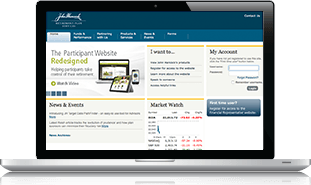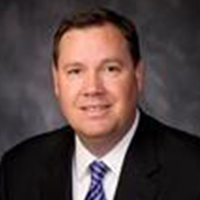What’s in SECURE 2.0 for small businesses? A lot
In a tight labor market, companies of all sizes are looking for a competitive edge. SECURE 2.0 just made it easier for small businesses to add a tool to their talent retention toolboxes—a retirement plan. We realize most small business owners don’t have time to read through lengthy legislation. That’s why we’ve broken out the key provisions small business owners and their financial professionals should get to know if they’re considering adding a retirement plan to their benefits.

[Updated article; original publish date 2/24/23]
SECURE 2.0 makes retirement plans easier for small businesses
Although large companies may consider offering a 401(k) table stakes, many small businesses think it’s a luxury they can’t afford. But workers also consider a 401(k) table stakes—80% of employees are unlikely to work for a company that doesn’t offer a retirement plan.¹ In an environment of low unemployment, employers of all sizes are competing with each other for talent—and a retirement plan is a key part of bringing talent to the table.
Even before SECURE 2.0, there were options to help small businesses offer a retirement plan, but the new legislation has really upped the ante. Several provisions are specifically aimed to make it easier and more financially feasible to offer a plan. If you’re a small business owner—or you advise one—here are the key provisions you may want to explore.
Sections 102 and 111: modification of credit for small employer pension start-up costs
Section 102—for taxable years beginning after December 31, 2022
Section 111—for taxable years beginning after December 31, 2019 (effective retroactively)
Summary
Before SECURE 2.0, the three-year start-up tax credit for employers with up to 100 employees was 50% of qualified start-up costs, with an annual limit of $5,000 (or if less, $250 times the number of non-highly compensated employees, with a minimum of $500).
Section 102 of SECURE 2.0 increases the 50% limit to 100% for employers with up to 50 employees, subject to the same annual dollar limit. The 50% limit remains the same for employers with 51 to 100 employees. For this purpose, qualified start-up costs are generally defined as ordinary and necessary costs needed to set up and administer the plan or to educate employees about the plan.
An additional tax credit for eligible employer contributions (except in the case of defined benefit plans) is available to eligible employers for five years. The additional credit amount will be based on an applicable percentage of the amount contributed by the employer on behalf of employees (excluding elective deferrals), up to $1,000 per employee (excluding employees with wages that exceed $100,000—indexed for inflation). The applicable percentage is as follows:
- First year: 100%
- Second year: 100%
- Third year: 75%
- Fourth year: 50%
- Fifth year: 25%
- Sixth year and thereafter: 0%
Employers with 50 or fewer employees are eligible for the full credit, but the credit is phased out for employers with between 51 and 100 employees.
Section 111 of SECURE 2.0, paired with Section 102, clarifies that a small employer that joins a multiple employer plan (MEP) or pooled employer plan is eligible for the full start-up credit, provided that the small employer is otherwise eligible. This applies regardless of how many years the MEP was previously in existence.
Manulife John Hancock Retirement viewpoint: The expanded tax credit provides a strong incentive for small employers that otherwise may be hindered by the administrative burdens and costs involved in establishing a retirement plan for their employees.
Section 121: new starter 401(k) plan
For plan years beginning after December 31, 2023
Summary
An employer that doesn’t maintain a retirement plan may establish a starter 401(k) or safe harbor 403(b) plan. Both types of plans, generally, must:
- Limit contributions to elective deferrals only
- Cover all employees, except those who can be excluded by statute
- Have automatic deferrals at a rate of at least 3% but not more than 15%
- Have an elective contribution limit of $6,000 (indexed for inflation)
- Have a catch-up contribution limit equal to the IRA catch-up contribution limit, which is now indexed for inflation under SECURE 2.0
Starter 401(k) and safe harbor 403(b) plans aren’t subject to average deferral percentage and top-heavy testing.
Manulife John Hancock Retirement viewpoint: For small employers that don’t sponsor a retirement plan and aren’t ready to make employer matching or nonelective contributions, this may be an attractive alternative to setting up a 401(k) plan with employer contributions or a state-mandated IRA. In addition, the cost of establishing a starter 401(k) plan may be offset by the increased tax credit if the employer is eligible. For plan years after December 31, 2024, starter 401(k) and safe harbor 403(b) plans maintained by employers with more than 10 employees will have to comply with the automatic increase provision in Section 101 of SECURE 2.0.
Section 310: exemption of otherwise excludable employees from top-heavy minimum contributions
For plan years beginning after December 31, 2023
Summary
Plans that allow for employees to enter earlier than the statutory eligibility requirements of age 21 and one year of service may separately account for employees who join the plan before meeting these minimum eligibility requirements (i.e., otherwise excludable employees) for the purposes of coverage and nondiscrimination testing. Before SECURE 2.0, however, they couldn't do so for the purposes of top-heavy requirements. Now, under SECURE 2.0, DC plans may disregard otherwise excludable employees when determining whether a plan meets the top-heavy minimum contribution requirement.
Manulife John Hancock Retirement viewpoint: This provision allows plan sponsors of top-heavy plans to permit early entry without the obligation of additional top-heavy contribution expenses. This will generally benefit small employer plans since retirement plans of large employers are generally not top heavy.
Section 315: modification to family attribution rules
For plan years beginning after December 31, 2023
Summary
When applying most retirement plan requirements, certain related employers are treated as a single employer. The determination of whether employers are related is quite complicated and often involves looking at common ownership between companies. For this purpose, ownership is attributed to certain family members to determine whether common ownership exists. For example, previously, ownership was attributed to a minor child from a parent, so that if both parents of a minor child each own their own company, those companies would be considered related, even in the case of a divorce. Section 315 of SECURE 2.0 modifies the attribution rules so that attribution from parents to their minor child won’t by itself result in related employers. Further, community property laws will be disregarded when determining ownership.
Manulife John Hancock Retirement viewpoint: The modification to the family attribution rules is long overdue. This change should reduce the existence of inadvertent related employers and the negative impact they cause on their respective retirement plans, especially involving sole proprietors of small businesses.
Section 332: SIMPLE plans can be replaced with a safe harbor 401(k) plan midyear
For plan years beginning after December 31, 2023
Summary
An employer may terminate a SIMPLE IRA midyear and replace it with a safe harbor plan (i.e., SIMPLE 401(k) plan, traditional safe harbor 401(k) plan, QACA plan, or a starter 401(k) plan, although the starter 401(k) plan may have been included due to a drafting oversight) provided certain aggregated contribution limits under the terminated SIMPLE IRA and new safe harbor plan are satisfied. In addition, if employers terminate their SIMPLE IRA and establish a 401(k) or 403(b) plan, any rollovers to the new plan won’t be subject to the penalty tax that would otherwise apply under the two-year rule provided such amounts under the new plan are subject to the 401(k) (or 403(b), as the case may be) distribution restrictions.
Manulife John Hancock Retirement viewpoint: The ability to replace a SIMPLE IRA with a safe harbor plan (as defined above) midyear will generally allow participants to have greater retirement benefits, as well as to provide tax advantages to an employer.
Section 345: annual audits for a group of plans
Effective on December 29, 2022
Summary
The SECURE Act of 2019 permits a single Form 5500 to be filed for a group of plans (i.e., defined contribution plans that have the same trustee, named fiduciary, plan administrator, and investment options). SECURE 2.0 clarifies that, in such a case, an independent auditor’s report is required only for those individual plans that have 100 or more participants.
Manulife John Hancock Retirement viewpoint: This is a welcome clarification that participation in a group of plans won’t change the independent auditor’s report requirement, which will continue to apply on a plan-level basis. This will allow employers that have fewer than 100 participants to be part of a group of plans without having to obtain an independent auditor’s report. In addition, this will be of interest to third-party administrators (TPAs), who may be able to complete a single Form 5500 covering their clients participating in a group of plans without that causing their smaller clients to become subject to the independent auditor’s report requirement.
Don’t go it alone—seek advice from retirement plan experts
Of course, deciding to offer a retirement plan and then implementing one requires some thought and the help of trusted experts. Small business owners offering a retirement plan normally work with a financial professional and TPA to help them understand the rules and manage the administrative and fiduciary tasks that come with offering a plan. Thanks to SECURE 2.0, some of those tasks have become a little easier, especially for small businesses.
1 John Hancock’s ninth annual stress, finances, and well-being survey, John Hancock, Edelman Public Relations Worldwide Canada Inc. (Edelman), December 2022. This information is general in nature and is not intended to constitute legal or investment advice. Edelman and John Hancock are not affiliated, and neither is responsible for the liabilities of the other. This report presents the results of research conducted by Edelman on behalf of John Hancock. The objectives of this study were to (1) quantify the financial situation and level of financial stress of John Hancock plan participants; (2) determine the key triggers of financial stress; (3) understand the extent to which actions, including actual financial behavior and planning activity, ameliorate stress; and (4) assess retirement preparation and readiness. This was an online survey of 3,825 John Hancock plan participants. The survey was conducted from 11/29/22 through 12/14/22, with an average survey length of approximately 18 minutes per respondent. Respondents were located from a list of eligible plan participants provided by John Hancock. All statistical testing is done at 0.95 significance levels. The maximum margin of sampling error at the 95% confidence level is ±1.3%.
Getting to know SECURE 2.0
Visit our resource center to download our research study, watch webinars, and more.
Important disclosures
Important disclosures
The content of this document is for general information only and is believed to be accurate and reliable as of the posting date, but may be subject to change. It is not intended to provide investment, tax, plan design, or legal advice (unless otherwise indicated). Please consult your own independent advisor as to any investment, tax, or legal statements made.
This is intended for a plan sponsor audience.
MGR0729254691982 07/25



